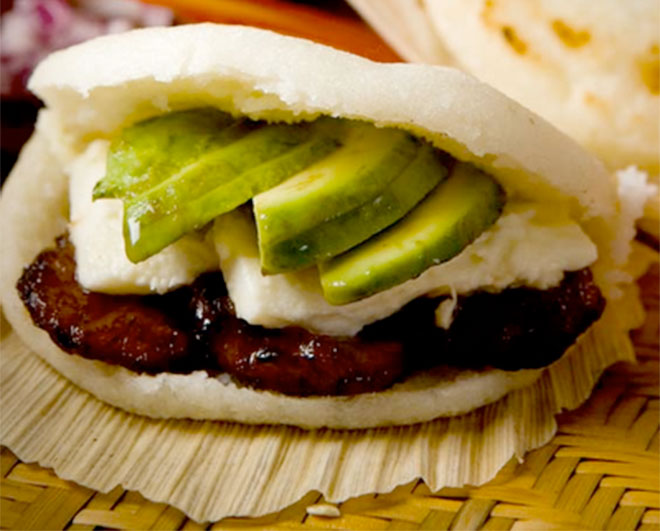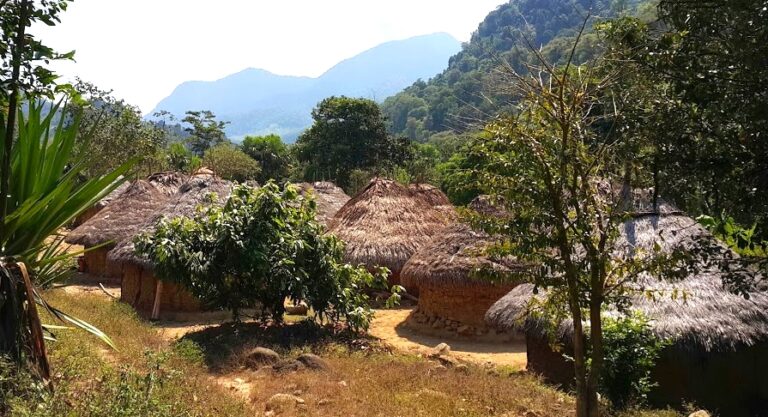The arepa tops the list of Colombian foods most loved by locals and yet maligned and misunderstood by visitors. Offer it to many foreigners and they’d prefer to eat the plastic packaging it comes in before the contents inside. And if you’ve been offered the wrong variety, such as the flat, tasteless, sandpaper discs sold cheaply at supermarkets, this choice actually seems reasonable. (Here is one husband’s reaction to his Colombian wife introducing him to the wide world of arepas).
Coming to terms with the arepa, in its array of guises, tastes and recipes, is crucial to appreciating Colombian food; it is the undeniable staple of the local cuisine. Dry and flavorless in one form can transform into moist and succulent in another if you dare to delve a little further into the ubiquitous food’s history and recipes.
The arepa is a circular flatbread composed of maize or flour kernels which is mostly eaten with breakfast but available at almost every meal. “Corn cake” would be the easiest term in the English speaking vernacular, but it is often described as the Colombian version of the tortilla. The term arepa is derived from “erepa,” meaning corn bread in the language of the Indigenous people of Colombia.
Over many centuries and following Spanish colonization, the original indigenous recipe was adopted by the newcomers and evolved with the introduction of European ingredients to become what it is today; an extremely popular food available in many unique, local recipes. The Colombian arepa’s history is deeply tied to the agricultural workers and indigenous people of the nation’s past. It was eaten daily, often multiple times, and provided crucial sustenance and energy for the intense and sustained manual labor required on Colombian farms.
Once prepared through an arduous and monotonous process of cooking raw maize, “instant” flours and ready-made arepas make the process much easier for today’s fast-paced life. Yet every Colombian will tell you that the arepas their grandmother used to make were the best in the world – there’s just no substitute for home cooking no matter the food.
Of the countless varieties, let’s highlight three that we think are the most interesting and delicious types of arepa available in Colombia today.
Arepa de Choclo
This variety of arepa is sweeter and thicker than the typical household arepa, and has the moistness and texture of a freshly baked cake. Sweet maize is utilized to give the arepa a sweetened flavor and a deep, yellow tinge. Often cooked on a grill pancake-style, a hefty chunk of white cheese, creamy and soft, is placed atop the arepa to balance the meal’s texture. Small arepa de choclo food stands are ubiquitous around the city, and locals enjoy them hot off the grill as they just melt in your mouth. Don’t even think about taking a single step before taking that first delicious bite.

The arepa de choclo has found its way outside of the Colombian borders, as it’s relatively easy to find in places such as Miami and New York. One company, Doña Arepa, has been dishing out arepa de choclo state-side for over 25 years. Our walking street food tour features a mouthwatering local street-sold arepa de choclo, a wholesome Colombian snack perfect as grub on the go or just an afternoon stroll through the plaza.

Arepa de Huevo
This arepa was born on the Caribbean coast of Colombia, and is a wildly popular street food in the tourist hub of Cartegena. The arepa de huevo or ‘egg arepa’, naturally has the defining feature of containing egg inside. Salty, yellowish maize dough is originally fried with hot oil in order to toughen it up to a harder, more durable texture. Following this, an incision is made into the fried dough and raw egg is carefully poured inside so that it does not leak through the now fried outer shell. The arepa is then fried for a second time, ensuring that the egg is not only cooked but that the outer layer of corn dough is nice and crispy. Additionally, different types of meat may be added to the egg mixture for added flavor and volume. Depending on where you are, every city, shop or house has a favorite way of preparing theirs.
Arepa Rellena
The arepa rellena is the arepa’s version of “animal style”, overflowing with ingredients and looking like a gourmet burger. A heartier meal often known as the “arepa with everything”, it definitely serves as a main or a satisfying snack.
Colombians will have you believe it spawns from the Cauca Valley, and is thus extremely popular in the city of Cali, but you will find these arepas across northern South America and particularly in Venezuela. The arepa rellena is stuffed (rellena means stuffed!) with a large variety of ingredients depending on the region and therefore has the least consistently used recipe of the arepas that we have covered. It will usually consist of a primary meat, such as a beef patty, chicken or ham, and be dressed with salad, generous wedges of avocado, cheese and a sauce.

The arepa is extremely important to the Colombian diet, and as you can see, comes in a variety of shapes, sizes, flavors and recipes. To try your hand at some delicious arepa recipes, definitely check out Erica Dinho at My Colombian Recipes. And if you are unlucky enough to have your first bite of arepa be less than satisfying, do not give up hope! Taste on, there is a perfect arepa out there waiting for you.



